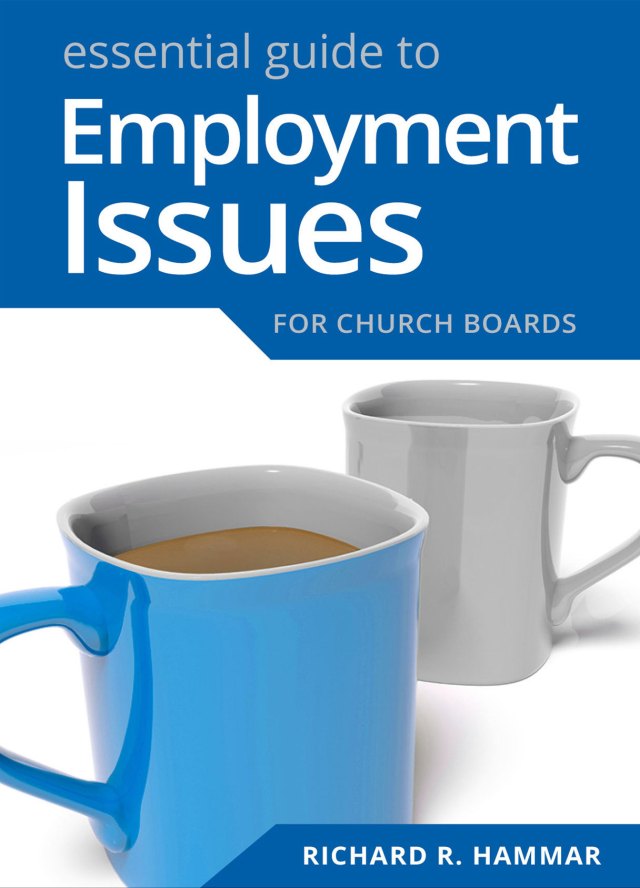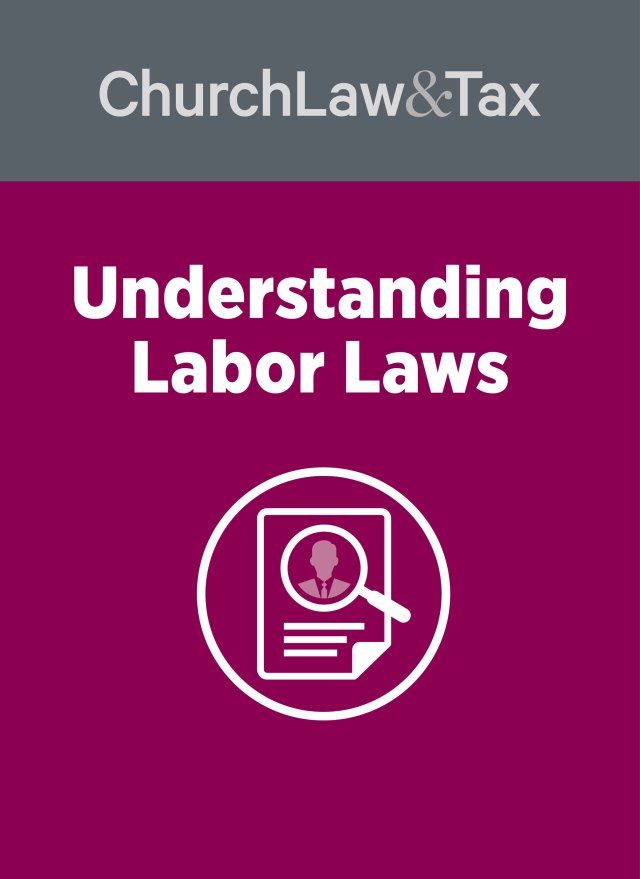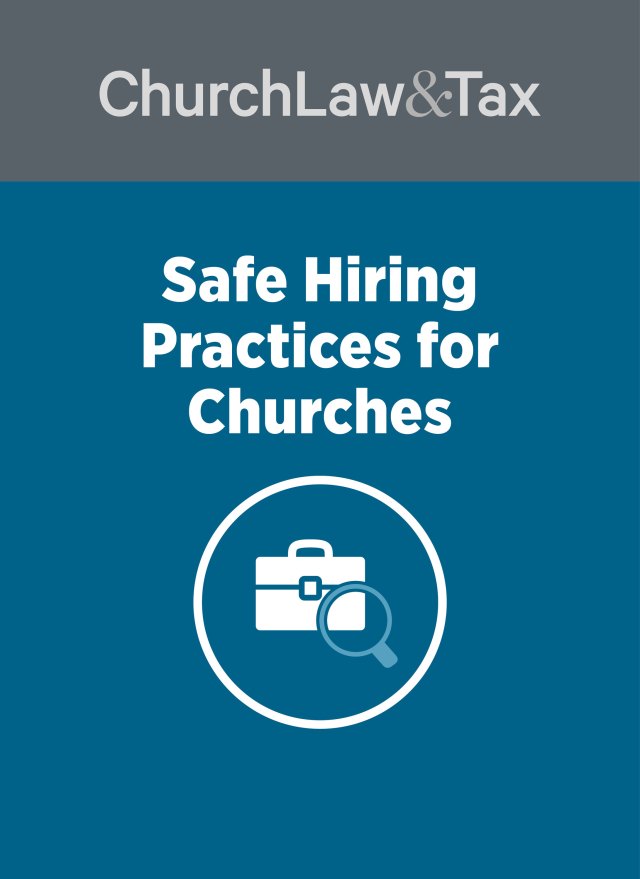• Key point 8-08.1. Title VII of the Civil Rights Act of 1964 prohibits employers engaged in commerce and having at least 15 employees from discriminating in any employment decision on the basis of race, color, national origin, gender, or religion. Religious organizations are exempt from the ban on religious discrimination, but not from the other prohibited forms of discrimination.
The Civil Rights Act of 1964
• Key point 8-21. The federal Family and Medical Leave Act requires employers with 50 or more employees and engaged in interstate commerce to allow employees up to 12 weeks of unpaid leave each year on account of certain medical and family needs. There is no exemption for religious organizations.
* A federal court in Michigan ruled that a church school did not violate the Family and Medical Leave Act, or a state employment discrimination law, when it refused to return a female employee to her former job following a 33-week leave of absence caused by pregnancy-related complications. A female employee (Sally) of a church-owned private school became unable to work three months into a pregnancy. She did not return to work until 33 weeks after she began pregnancy leave. When she reported for work, the new school principal informed her that she was assigned to a new position with the same salary and benefits, according to a plan he had devised to reorganize the office. Sally perceived this reassignment as a demotion, tendered a letter of resignation a few days later, and then filed a lawsuit claiming that the church violated her rights under the Family and Medical Leave Act (FMLA) and discriminated against her on account of her pregnancy in violation of a state civil rights law.
FMLA
The federal Family and Medical Leave Act provides that eligible employees (who work for an employer with at least 50 employees) are entitled to as many as 12 weeks of leave during a one-year period upon the occurrence of a number of health-related events, including “the birth of a son or daughter of the employee and in order to care for such son or daughter,” and “a serious health condition that makes the employee unable to perform the functions of the position of such employee.” If the employee returns to work within 12 weeks, the employee is entitled to be restored to his or her prior job or to an equivalent position if the prior job is no longer available. An employer is prohibited from “interfering with, restraining, or denying the exercise of or the attempt to exercise, any right provided” under the FMLA, and may not discharge or discriminate in any way against an employee for opposing practices that are unlawful under the FMLA. The FMLA authorizes employees to sue their employer to enforce their FMLA rights.
The 12 weeks of unpaid leave was intended by Congress to set a minimum standard for qualifying employers, but Congressional policy encourages employers to provide more generous benefits. For example, some employers allow more than 12 weeks of leave; others provide paid leave; and yet others designate certain leave as not counting against the 12 weeks allotted under the FMLA. Congress has authorized the Department of Labor to enact rules to carry out the purposes of the Act. Pursuant to that authority, the Department of Labor has promulgated rules for employers to follow in designating the paid and unpaid leave that will count against the FMLA-mandated 12 weeks.
Simply put, the regulations state that “it is the employer’s responsibility to designate leave, paid or unpaid, as FMLA-qualifying, and to give notice of the designation to the employee as provided in this section.” According to the regulations, an employer’s failure to give an appropriate notice designating leave as FMLA-qualifying leave precludes the employer from counting any of the absences against the FMLA’s 12 weeks. An employer may not designate leave as FMLA leave retroactively.
In this case the church failed to notify Sally that any of her disability leave commencing on the day she left her job due to pregnancy was considered FMLA leave. She claimed that her absence from work before the church designated her leave as FMLA leave could not be counted against FMLA’s 12 weeks, and since she returned to work within 12 weeks of the church’s designation she enjoys the protection of the FMLA despite an actual absence that exceeded 12 weeks.
The court relied on a decision by the United States Supreme Court in which the Court concluded that an employer’s violation of the notice regulations does not automatically entitle an employee to additional leave beyond 12 weeks or establish a right to recovery. Ragsdale v. Wolverine World Wide, Inc., 535 U.S. 81 (2002). Rather, the employee must prove that she suffered prejudice by the employer’s failure to properly notify her of her rights under the FMLA or that certain leave would be counted against her FMLA allotment. The court concluded that there was no evidence that Sally could have returned to work within 12 weeks of the time she began her pregnancy leave regardless of the notice the church might have given her regarding her rights and responsibilities under the FMLA. An employee “who does not return to work within the 12-week period specified by the FMLA may not claim the protection provided by the Act.”
pregnancy discrimination
Sally also claimed that the church unlawfully discriminated against her on account of her pregnancy in violation of a state civil rights law prohibiting employers from discriminating against employees on the basis of sex, pregnancy or childbirth. However, the court noted that “to make out a claim of sex discrimination under that statute, a plaintiff must produce evidence that she suffered an adverse employment action and that sex was a determining factor in the employer’s decision.” The court concluded that this requirement was not met. It noted that the church produced evidence that the church had reassigned Sally based on concerns about her job performance arising before the beginning of her extended leave of absence. Further, Sally offered no evidence contradicting the church’s alleged reason for reassigning her. Thompson v. Diocese of Saginaw, 2004 WL 45519 (E.D. Mich. 2004).
© Copyright 2004 by Church Law & Tax Report. All rights reserved. This publication is designed to provide accurate and authoritative information in regard to the subject matter covered. It is provided with the understanding that the publisher is not engaged in rendering legal, accounting, or other professional service. If legal advice or other expert assistance is required, the services of a competent professional person should be sought. Church Law & Tax Report, PO Box 1098, Matthews, NC 28106. Reference Code: m43 c0604




